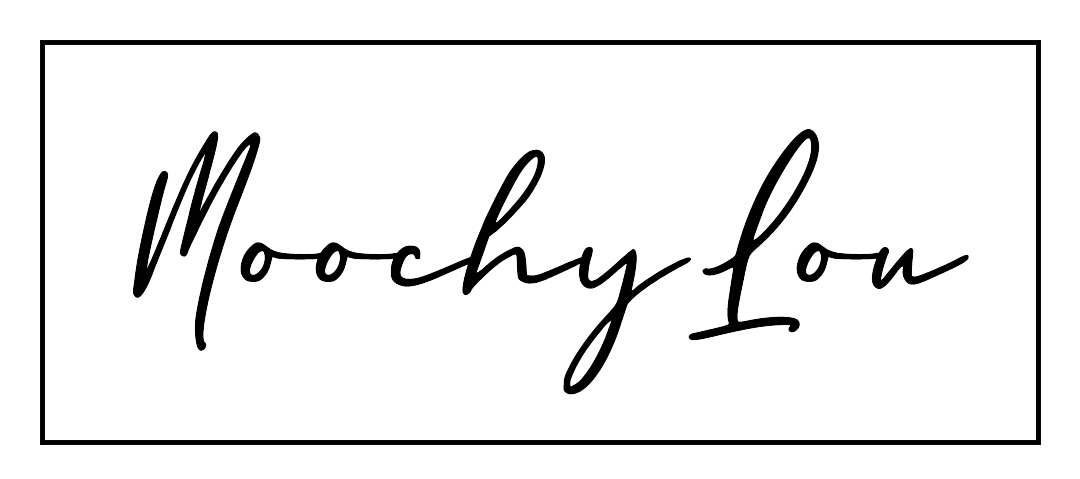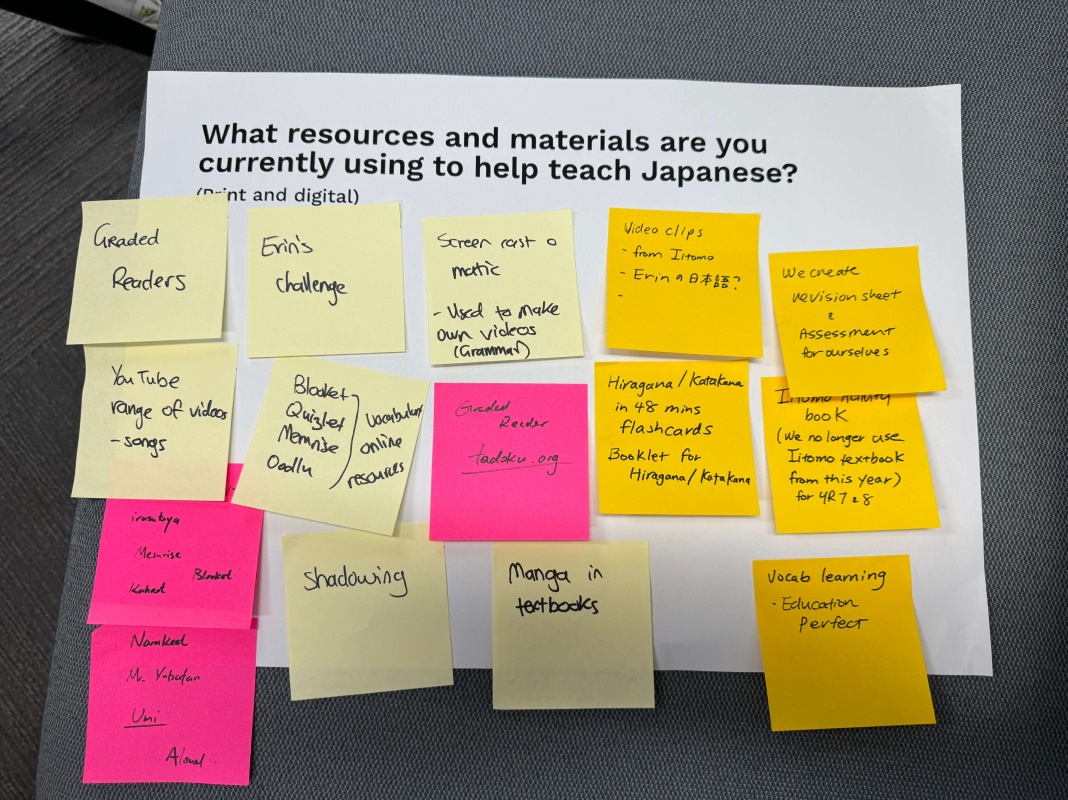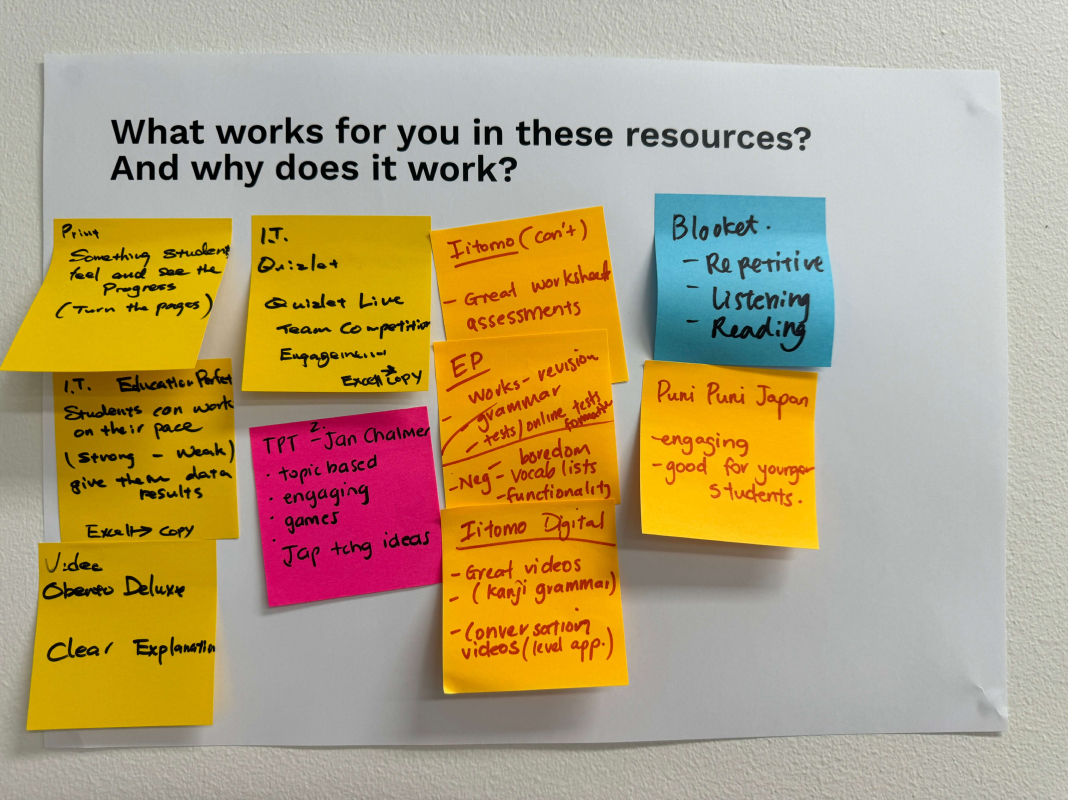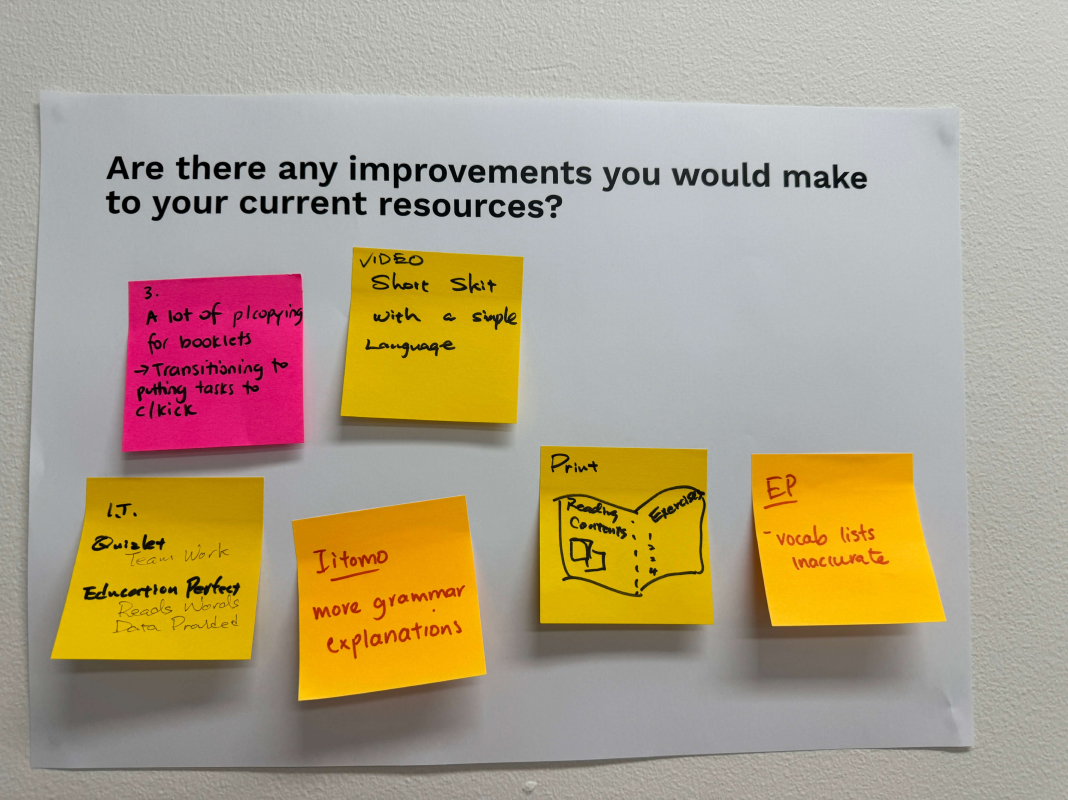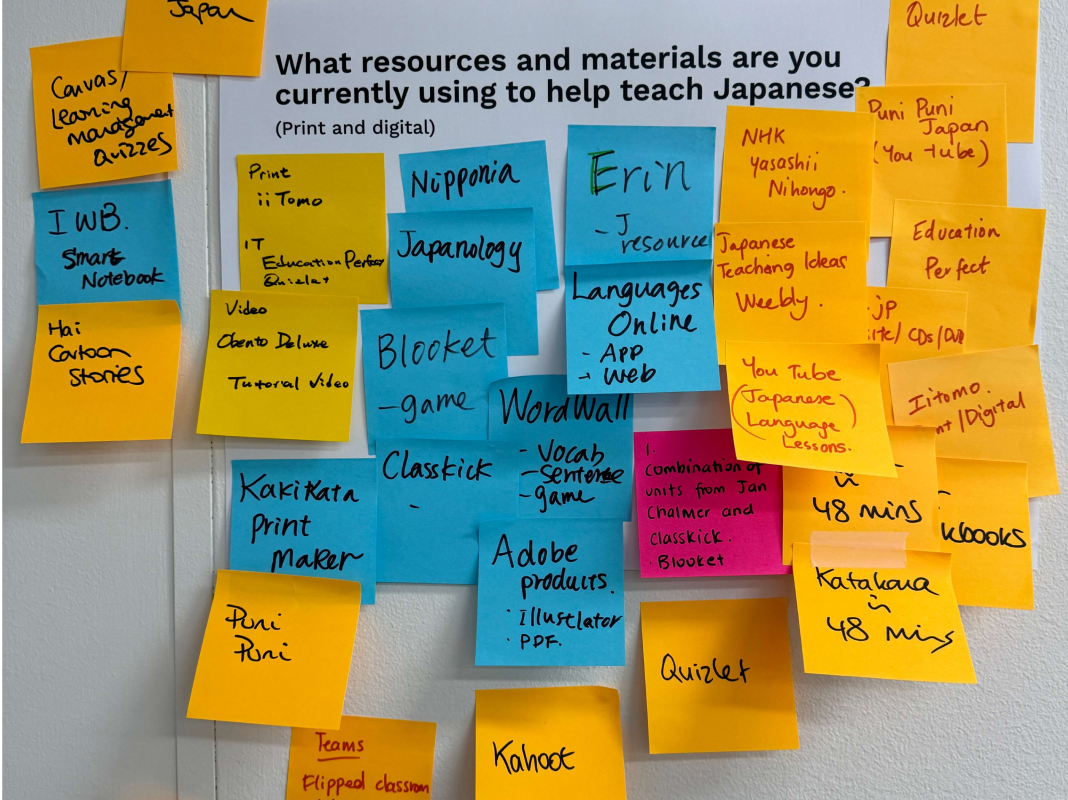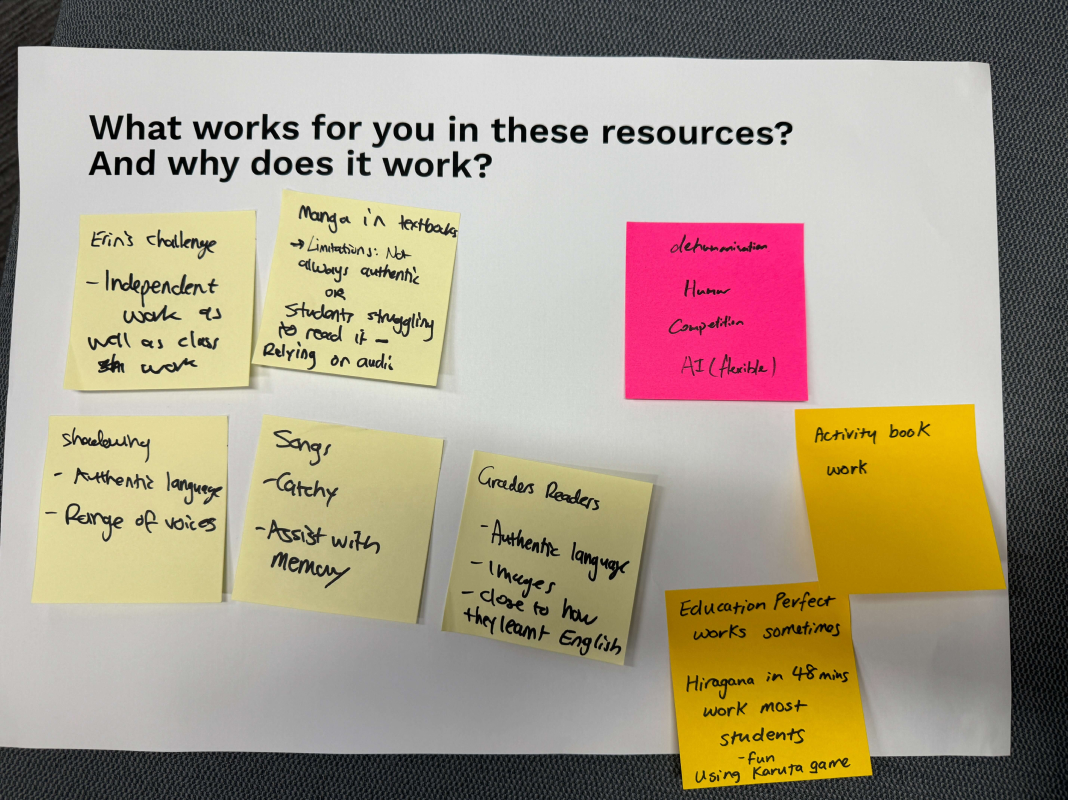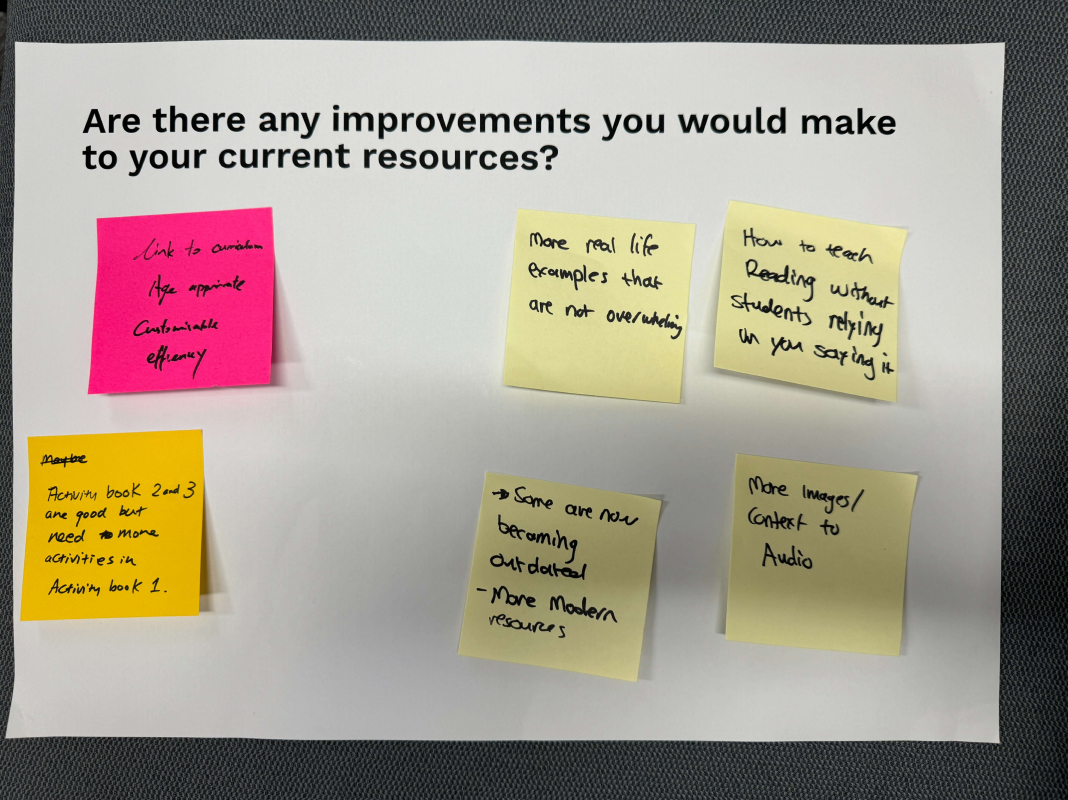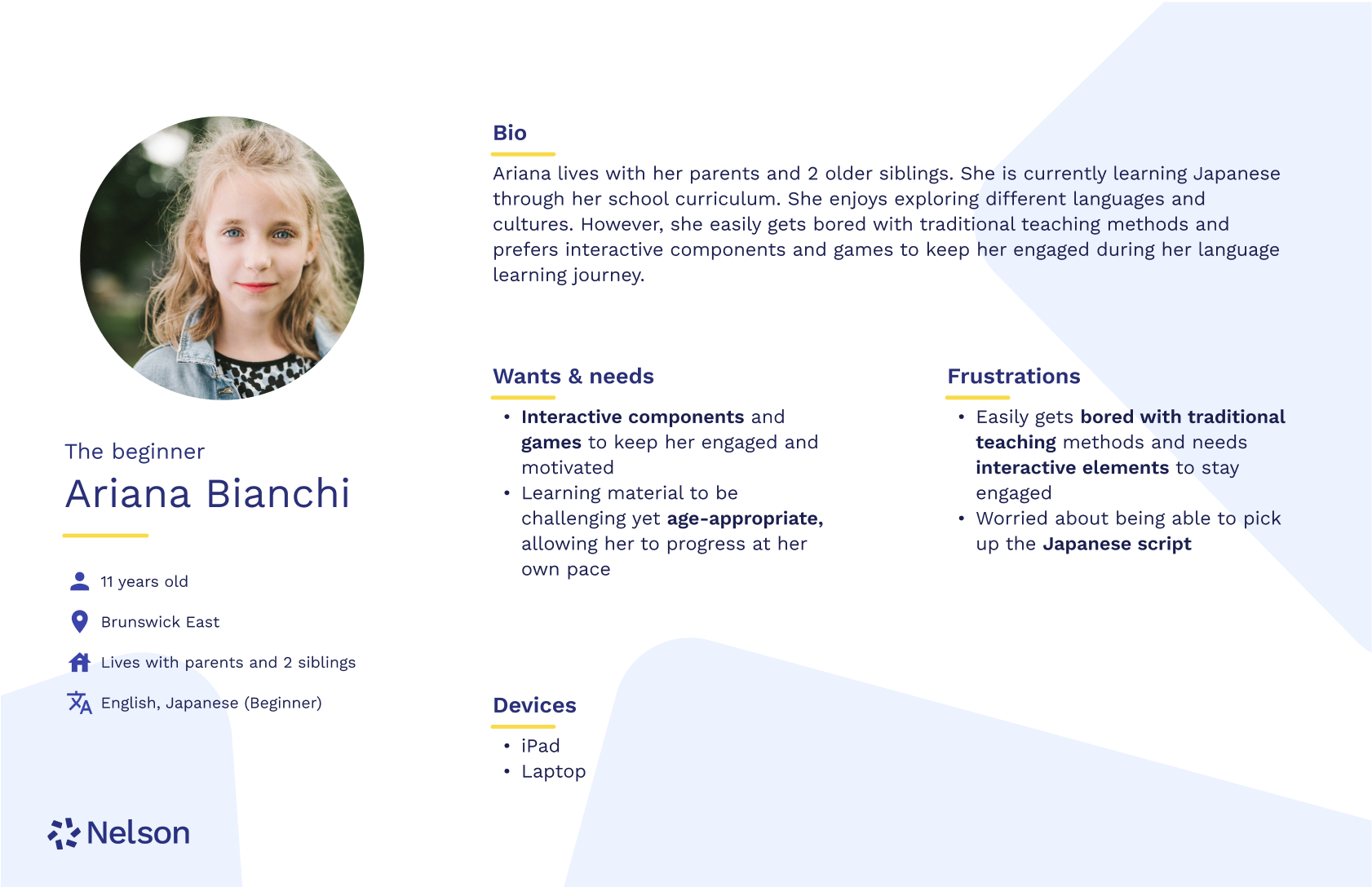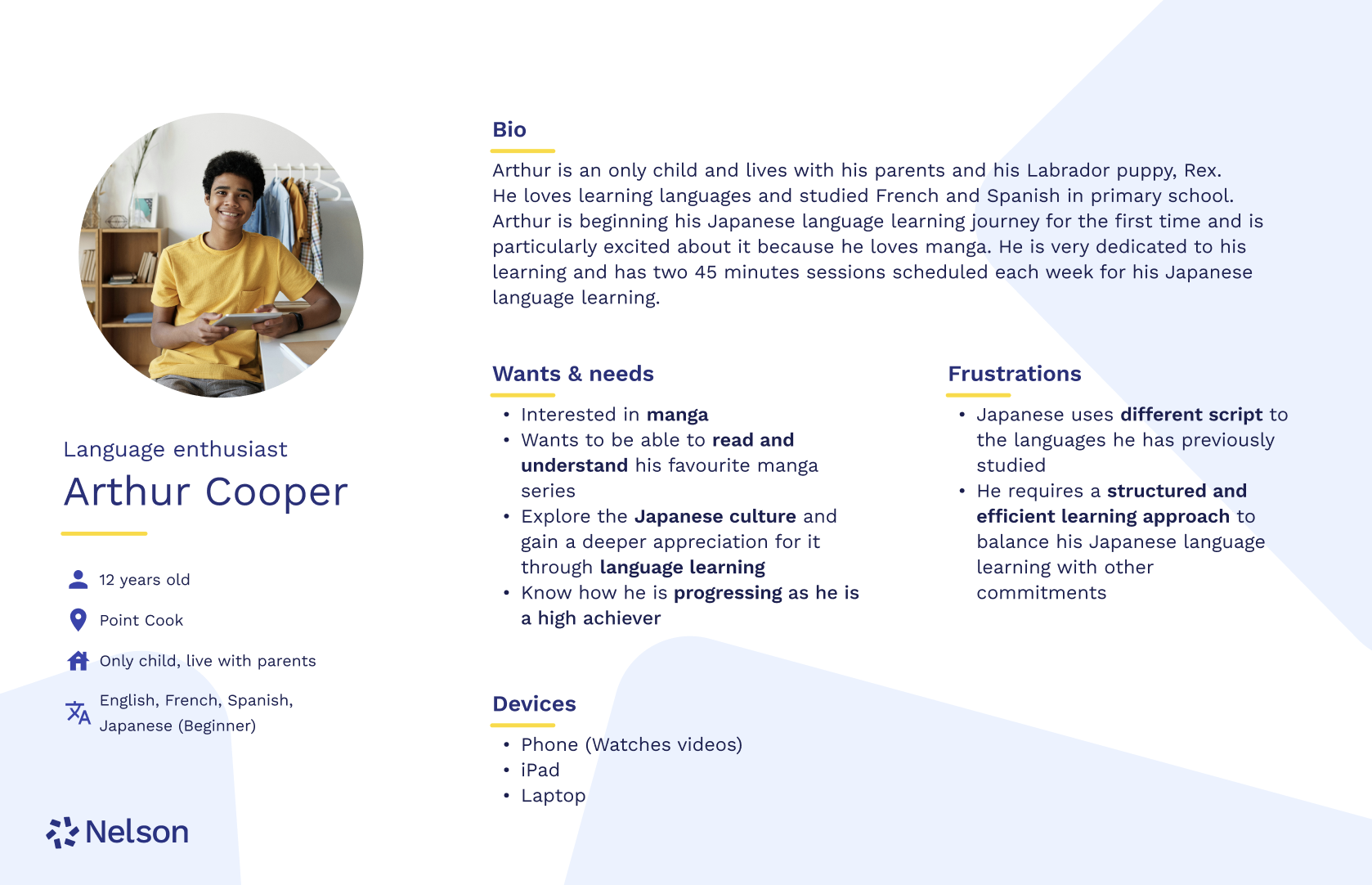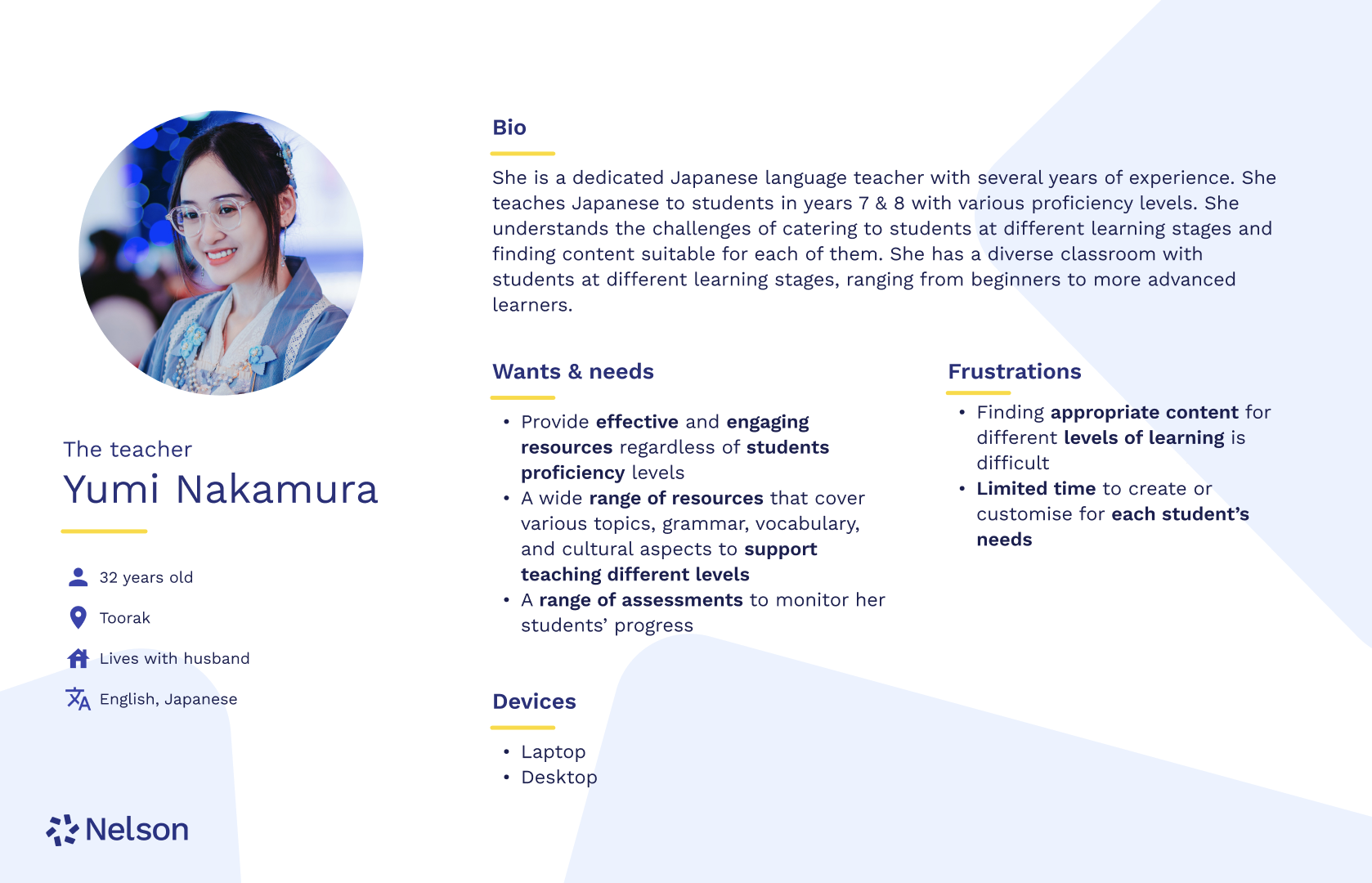Japanese digital course years 5-8
Focus group
2023
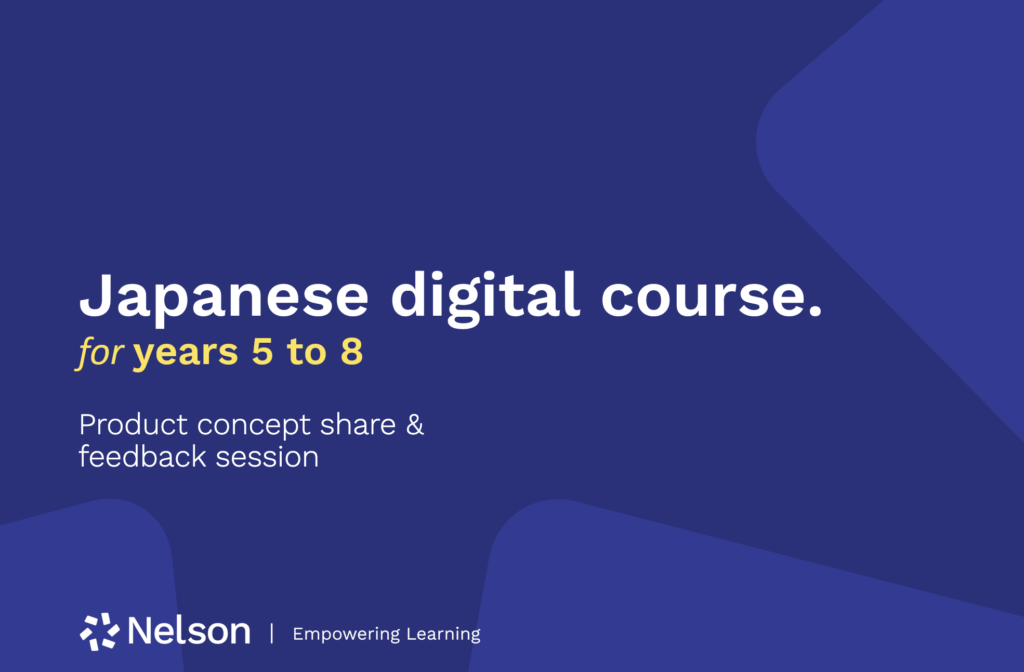
The problem
These days teachers are finding it more and more difficult to plan lessons and teach for differentiation.
In one class they will have a variety of students that are all at different levels. They have very limited time to prepare resources for each student therefore some students fall behind and other students get bored.
This is resulting in the number of students wanting to learn Japanese dropping.
My role
- Gathered requirements from the product manager
- Created the focus group session plan
- Recruited users
- Created a slide deck to run the session
- Led a warm up activity
- Create personas and user flows
- Led a card sorting activity
- Analyse and synthesise findings
How it began
Working as the internal UX Designer, I was engaged by the languages portfolio manager with a new concept idea that she had, a one stop shop for teachers and students that caters for differentiation.
The team had previously created a proof of concept and were looking to validate the concept with end users.
This was a new way of working for the staff at Cengage so I had to ensure I was supporting each member at each step.
Planning
I began discussing with the languages portfolio manager what it was that she wanted to validate to ensure we were on the same page with the focus group objectives.
The key objectives were:
- How would teachers use differentiated content?
- Validate the sequencing of the pedagogy
- What production styles of AV work well? e.g. animated or real life
- How engaging the interactives are for the students?
- What AV content has been used that engages students?
- How teachers and students use downloadable assets?
- How do teachers use worksheets?
- Seek feedback on:
- The overall module structure
- The approach to differentiation
- Content scope
- Appeal and ease of pedagogy
- Content types
- Look and feel of downloadable worksheets
- Font choice
I chose to conduct 2 focus groups with a smaller amount of users so that the users were not overwhelmed and would feel comfortable to engage in open discussions. It would also allow the users to have spontaneous discussions with each other that I could observe, which wouldn’t happen if this was a one-on-one session.
I created a focus group session plan, outlining the tasks required from each of the 7 staff members.
Participant requirements were outlined, we required:
- Teachers from both private and public schools
- Teaching years 5-8
- A mix of male and female
- With a variety of teaching experience
I began recruiting users, we had connections with a lot of teachers so I reached out to them via email.
Running the session
I ran 2 focus group sessions, the first with 3 teachers and the second with 5.
We covered each aspect of the concept idea with the users over 4 hours including differentiation, pedagogy, AV media, visual design, assets and content.
This method engaged the participants in open discussions that allowed me to collect as much qualitative data as possible.
Warm up activity
I led the warm up activity, three simple questions that allowed the teachers to answer easily and build their confidence to speak openly during the remainder of the session.
The questions were:
1. What resources and material are you currently using to help teach Japanese? (Print and digital)
2. What works for you in these resources and why?
3. Are there any improvements you would make to your current resources
This allowed me to understand:
- If anything useful for the teachers had been missed from the concept idea
- What the teachers actually like using and find effective
- What is not being provided to the teacher and what they actually want from a product

Pedagogy
Another area I led was the pedagogy, I wanted to present this part of the concept to the teachers and see if they would change anything.
To help the teachers further understand the pedagogy (learning flow), I created 3 user personas and a user flow for each persona.
This allowed the teachers to gain deeper knowledge into how the product might be used, as we had not yet created a prototype.
Personas

Card sorting
To understand how the teachers might change the pedagogy, I gave them a stack of cards with the learning flow on and some additional blank cards.
I asked them to arrange the cards into the order that they would find most effective and add or remove any bits that were missing.
This helped me to understand the way in which teachers actually teach in the classroom and if they would find anything else useful that we had missed.
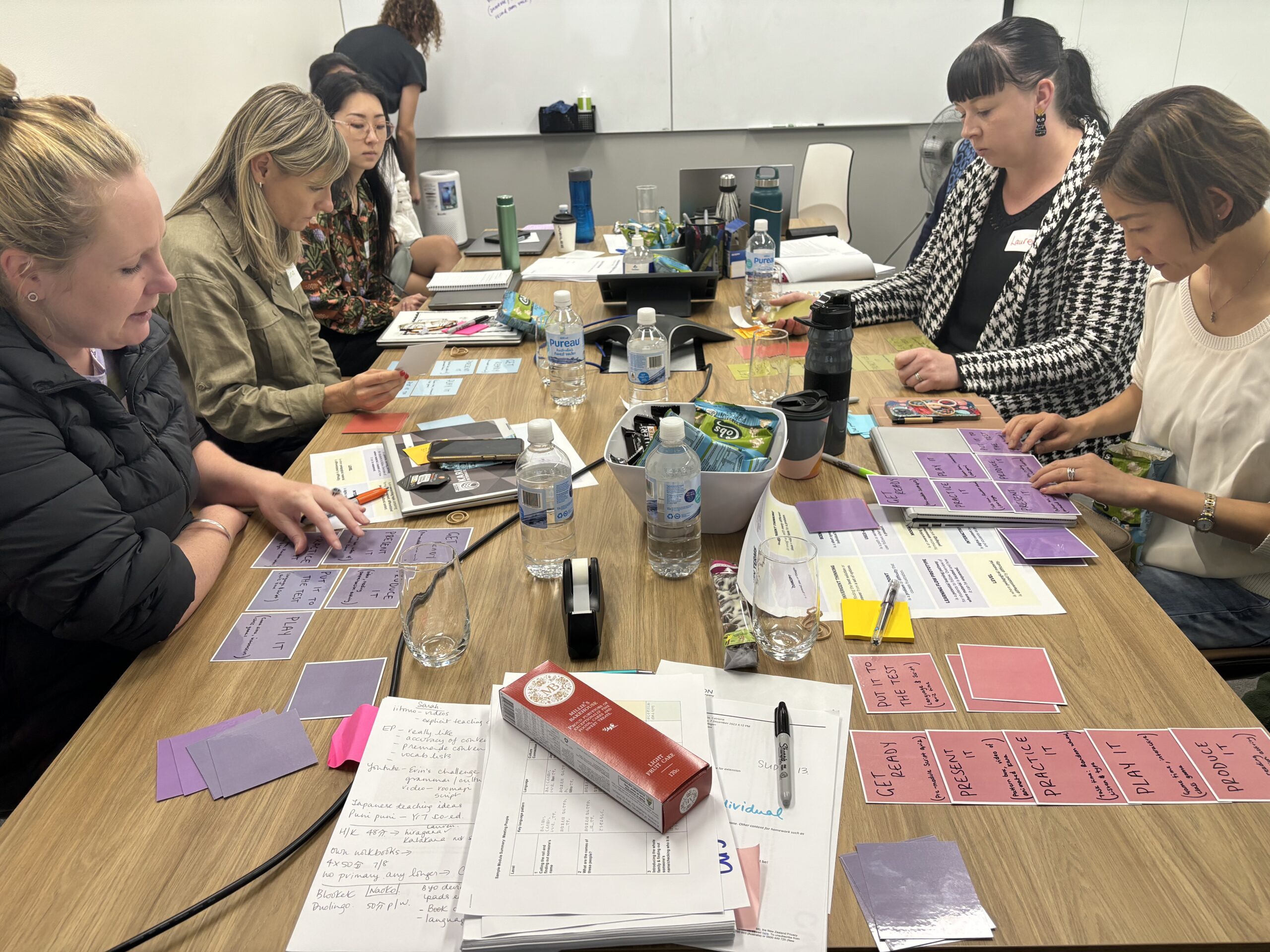
Analysis
I recorded each of the sessions and put all of the data into Dovetail. I chose this particular software as it easily allowed me to tag participant feedback and then create insights from those tags.
I analysed the data keeping in mind our session objectives and here are some of the findings:
- Teachers would use differentiated content to customise learning for the students at different levels.
- The pedagogy sequence should be different for years 5-6 (upper primary) and years 7-8 (lower secondary) due to what is engaging for the different ages.
- Regarding AV production styles, for engagement whilst learning teachers suggested using both animated and real life characters. However they would require only real life characters for assessment purposes.
- Our current naming of content types with ‘Task time’ would be overwhelming for students, therefore these need to be renamed.
- The look and feel of the visual design needs to be current and relatable for students to be engaged.
As a result of this workshop, the team are currently refining the concept idea as suggested by the findings.
